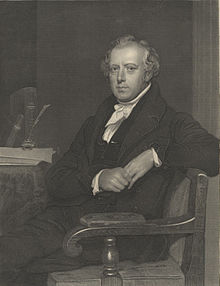Richard Oastler | |
|---|---|
 Engraving given away with the Northern Star by James Posselwhite, after a painting by Benjamin Garside. | |
| Born | December 20, 1789 Leeds, West Riding of Yorkshire, England |
| Died | August 22, 1861 (aged 71) Harrogate, West Riding of Yorkshire, England |
| Burial place | St Stephen's Church, Kirkstall, Leeds |
| Known for | Ten Hours Factory Bill |
| Spouse | Mary Tatham |
| Children | 2 (died by 1819) |
| Notes | |
| |
Richard Oastler (20 December 1789 – 22 August 1861) was a "Tory radical",[2] an active opponent of Catholic Emancipation and Parliamentary Reform and a lifelong admirer of the Duke of Wellington; but also an abolitionist and prominent in the "anti-Poor Law" resistance to the implementation of the "New Poor Law" of 1834. Most notably, as his sobriquet of the "Factory King" indicates, he was at the heart of the campaign for a ten-hour working day in its early years: although less so by the time of its successful culmination in the Factories Act 1847, he retained the sobriquet.
"Moved by pity and indignation at the long hours worked by young children in factories, he devoted his life to their emancipation, and was a tireless champion of the Ten Hours Factory Bill" noted a commemorative plaque erected in Leeds parish church in 1925.[3] "He cannot altogether claim prominence as a political thinker...but history acclaims him not as a politician, but as an agitator" commented the Yorkshire Post on that occasion.[4]
- ^ "Committal of Mr Stephens". The Morning Chronicle. 5 January 1839. p. 2.
- ^ Driver, Cecil Herbert (1946). Tory Radical: The Life of Richard Oastler. Oxford University Press. pp. 25–35. OCLC 183797.
- ^ "Oastler the Reformer: Memorial unveiled in Leeds". Yorkshire Post and Leeds Intelligencer. 2 November 1925. p. 6.
- ^ "Richard Oastler". Yorkshire Post and Leeds Intelligencer. 19 September 1925. p. 8.